Mark Gibian
B.F.A./B.A. '79
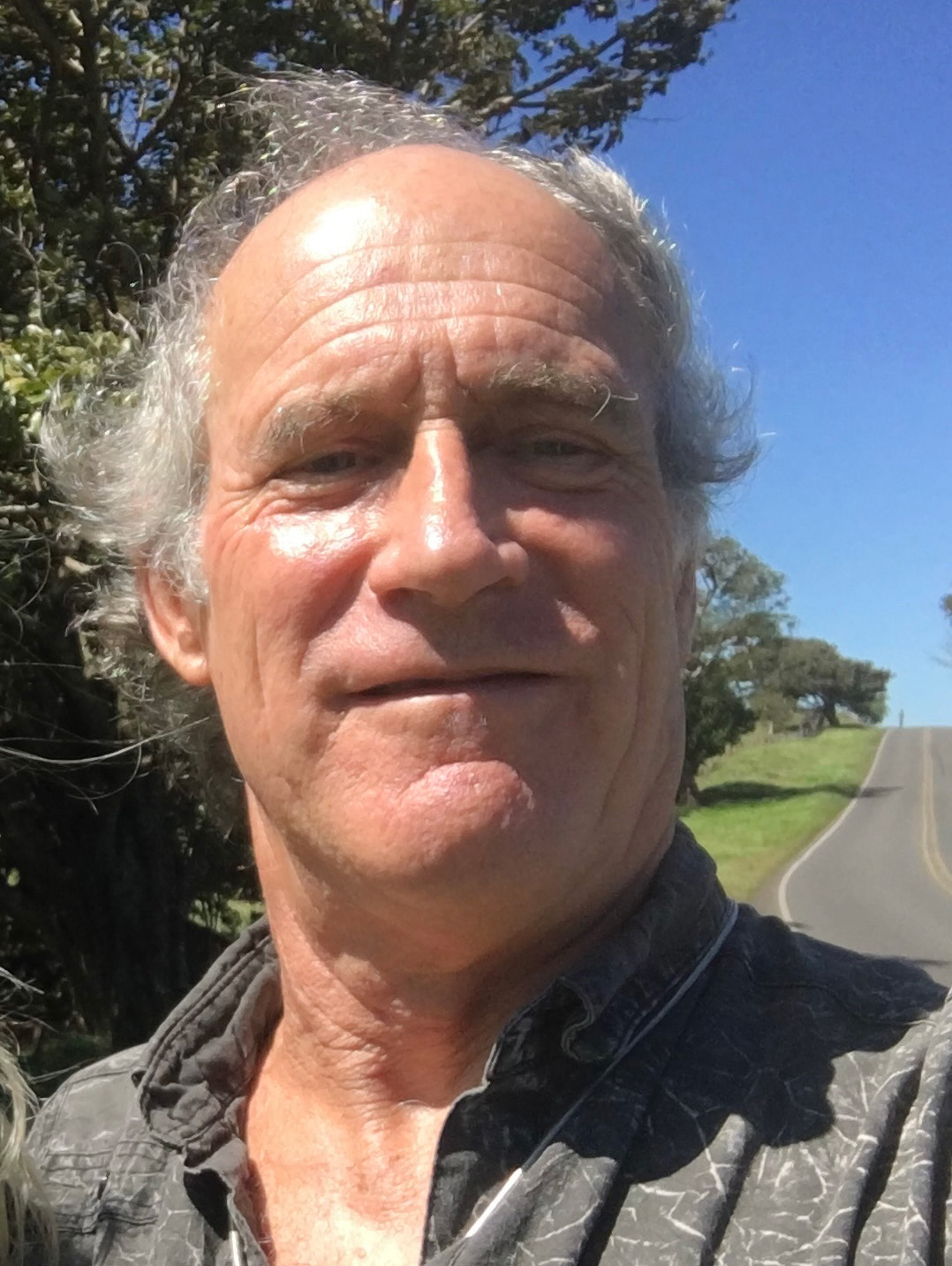
Mark Gibian.

Mechanical Flower #1 (2018), collaboration with Jim Polk, kinetic sculpture that opens and closes slowly, steel, aluminum, motors, phenolic, cables, stainless, 6' x 60' x 40'.

Mark Gibian with early glass and steel works on exhibit (1987) at BACA Downtown, Brooklyn.
Projects
Kinetic and Balancing Sculptures

Windflower / Hurricane Detector (1979), steel, slate, wood, steel bearings, 16' x 8' x 12', senior project, installation view near The Foundry, Cornell University, Ithaca, New York. Collection of Harcum College in Bryn Mawr, Pennsylvania.
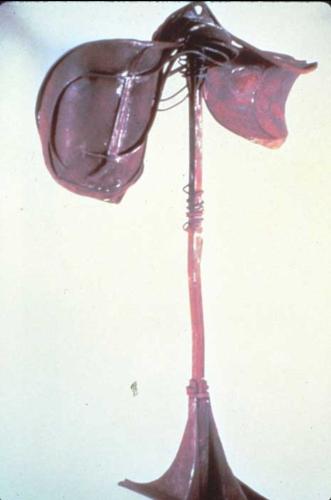
Pointer (1982), forged steel, one-point balancing windmill created at Sculpture Space in Utica, New York, collection of the Johnson Museum, Cornell University, Ithaca, New York.
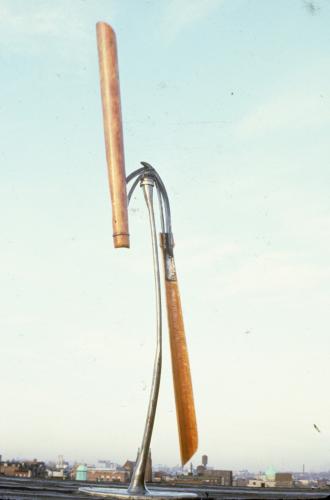
Nuria (1986), galvanized steel, wood columns, bearings, 14' x 5' x 4', kinetic wind sculpture based on the Savonius rotor vertical axis windmill, inspired by the alternative energy club at Cornell.
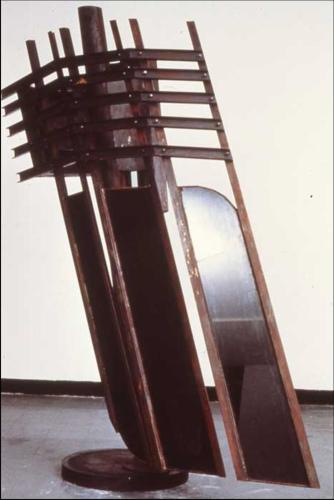
Rudder (1987), polychromed steel and glass, clear and black, 8' x 8' x 4', private collection, New York City.
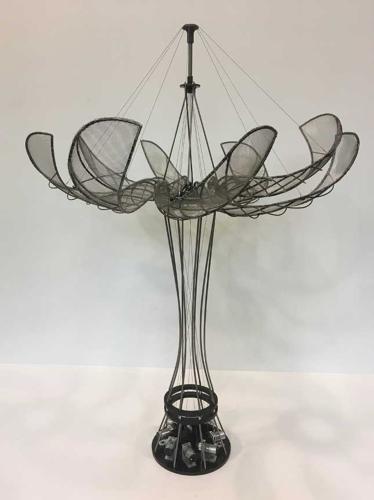
Mechanical Flower #1 (2018), collaboration with Jim Polk, kinetic sculpture that opens and closes slowly, steel, aluminum, motors, phenolic, cables, stainless, 6' x 60' x 40'.
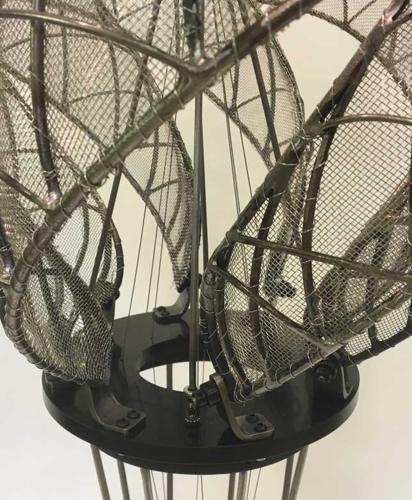
Detail view of Mechanical Flower #1 (2018), collaboration with Jim Polk, steel, aluminum, motors, phenolic, cables, stainless, 6' x 60' x 40'.
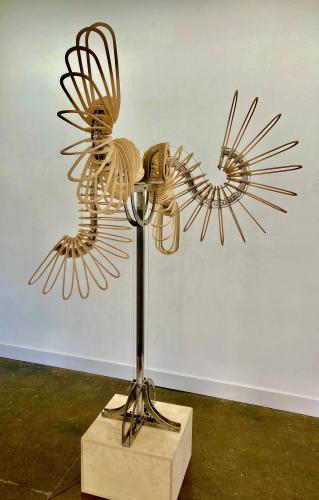
Flower Ring Mechanical Flower (2021), steel, motors, wood, cable, kinetically programmed to open and close in succession in every possible combination, 80" x 65" x 65".
Public Sculptures
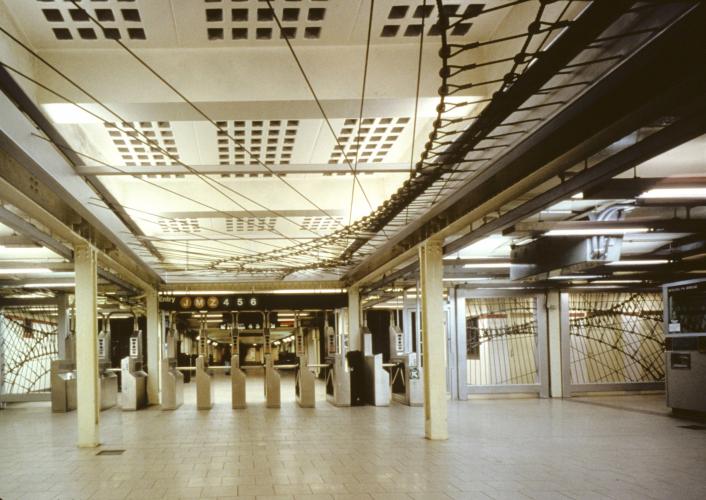
Cable Crossing (1997), site architect William Conklin of Conklin Rossant, barricade fence units and overhead skylight unit; steel and cables and cable fittings overhead, functional barricade cable sculpture specifically created as a tribute to the Brooklyn Bridge, which is directly outside the station, overhead unit 11' x 29' x 13', functional turnstile units with bridge theme, triptych: south 103" x 159" x 8", middle 102" x 81" x 8", north 102" x 67" x 8".
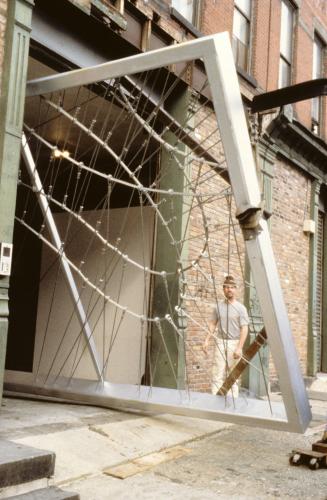
Cable Crossing (1997), transporting the largest section — the skylight unit (steel, cables, cable fittings) — from Gibian's studio in Williamsburg, Brooklyn, to the Brooklyn Bridge–City Hall subway station for installation.
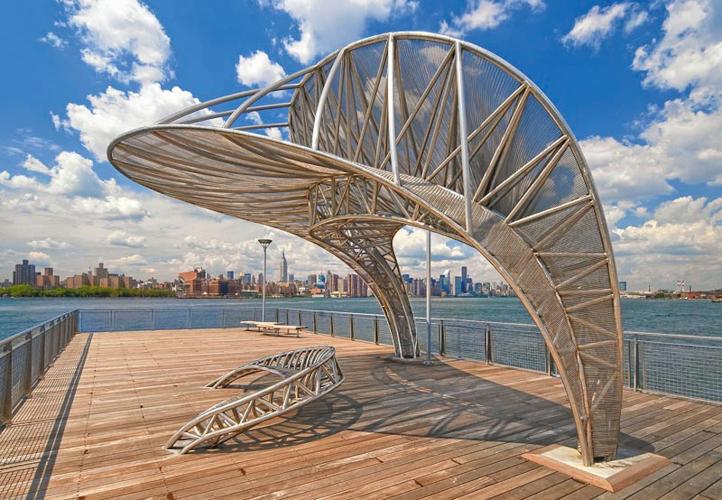
Crescendo (2008), combination seat and shade sculpture, stainless steel and mesh, overhead unit: 16' x 26' x 22', seating unit: 3' x 15' x 8', North 5th Street Pier, Brooklyn. photo / Mark Henninger

Offshoot, Serpentine Structures (2008), galvanized steel, 12' x 21' x 12', Hudson River Park, New York City.

Torque, Serpentine Structures (2008), functional love-seat structure, galvanized steel, 3' x 14' x 7', Hudson River Park, New York City.

Twister, Serpentine Structures (2008), galvanized steel, 15' x 27' x 18', Hudson River Park, New York City.
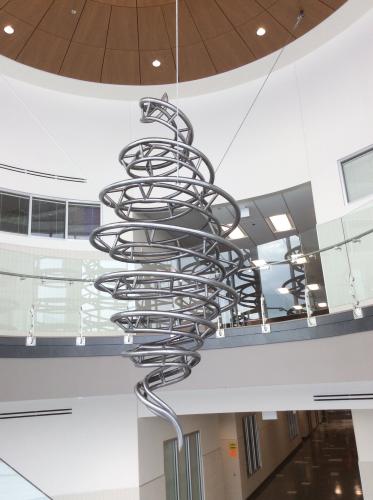
Vortex (2016), steel and cables, 14' x 6' x 6', permanent commission for the science wing of West High School, Anchorage.
Slumped Glass and Steel Sculptures

Intersection (1989), copper-plated steel and slumped glass, 45" x 80" x 36", private collection, New York City.
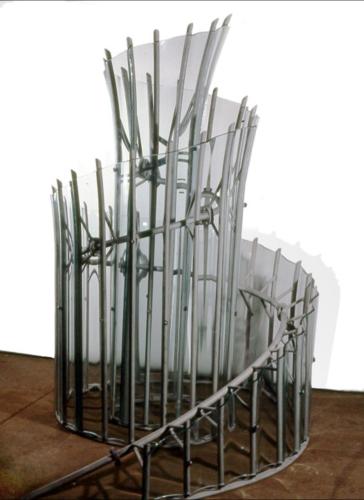
Maelstrom (1990), steel and slumped glass, 67" x 46" x 60", private collection, New York City.

Virella (1991), steel and slumped glass, 28" x 36" x 11".
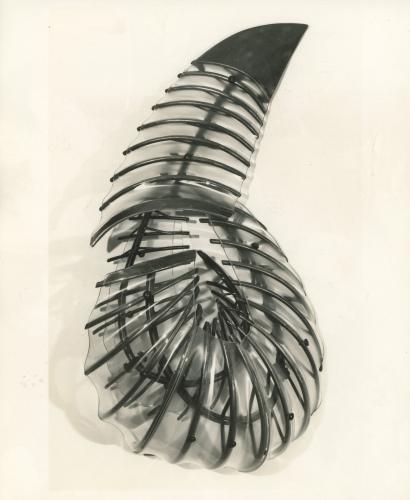
Brustian (1992), glass and steel, 53" x 25" x 13", private collection, New York City.
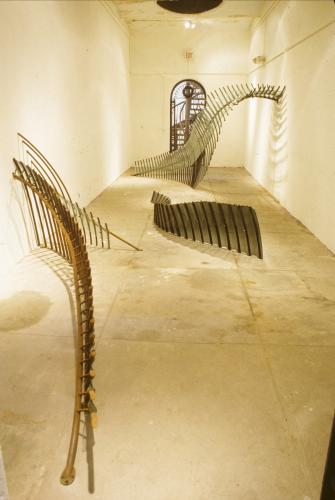
Taking Shape (1993), three large, slumped glass works: Weir, Propylaea, and Wave, 12' x 77', installation view inside the Memorial Arch, Grand Army Plaza, Brooklyn, Mariella Bisson (curator).
Works on Paper
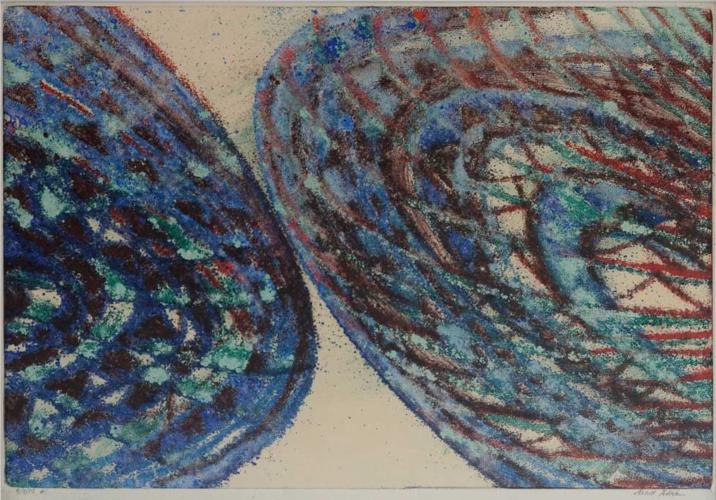
Double Play (2006), monoprint, unique with powdered pigments, 12" x 18".
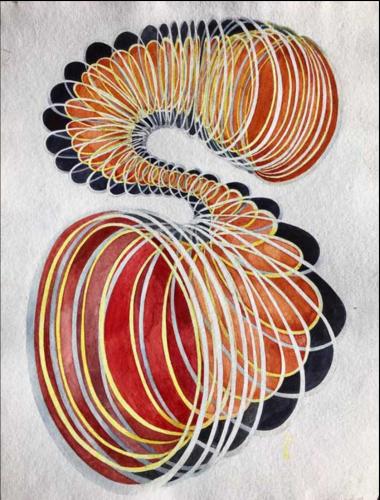
Spring (2019), watercolor, 20" x 16", private collection, Virginia.

Cadena (2019), watercolor in Payne's grey, designs for wire sculptures, 15" x 22".
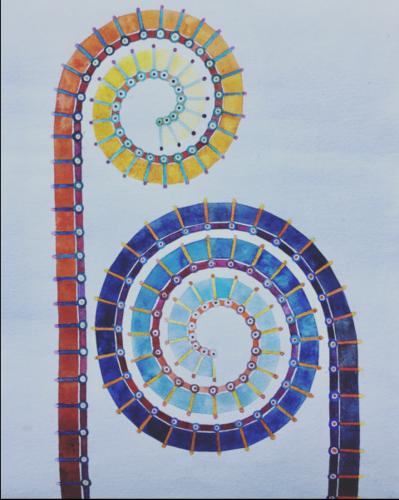
Blow-out (2020), elevation view watercolor, plan for future mechanical flower sculpture based on party favor, blow-out noise-maker toy, 20" x 16", private collection, Saranac Lake, New York.

Single Strand Hourglass (2022), watercolor, 20" x 15".
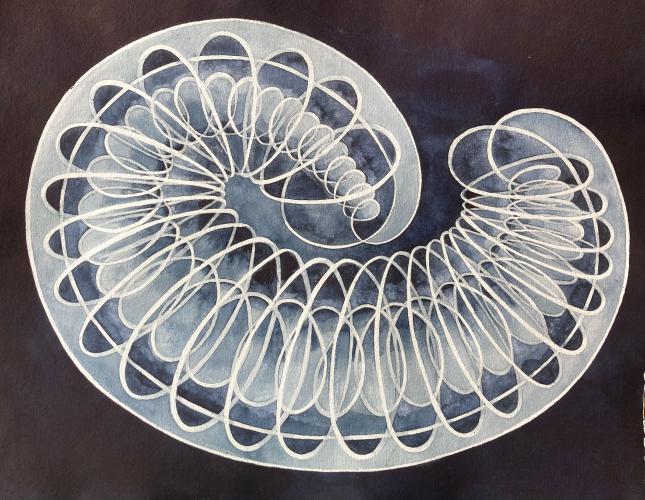
Capullo (2023), watercolor in Payne's grey, 20" x 15".
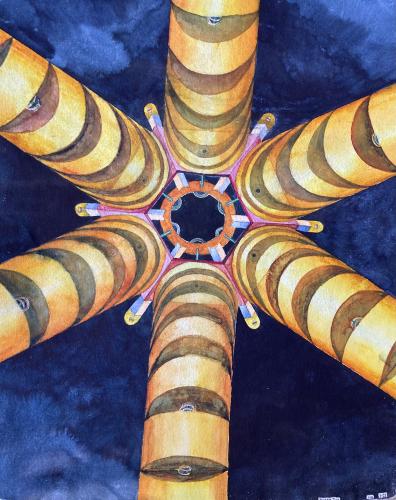
Tension Toy-Plan View (2023), in progress, watercolor, 15" x 20".
Color: Lorem ipsum dolor sit amet, consectetur adipisicing elit. Distinctio, eveniet?
